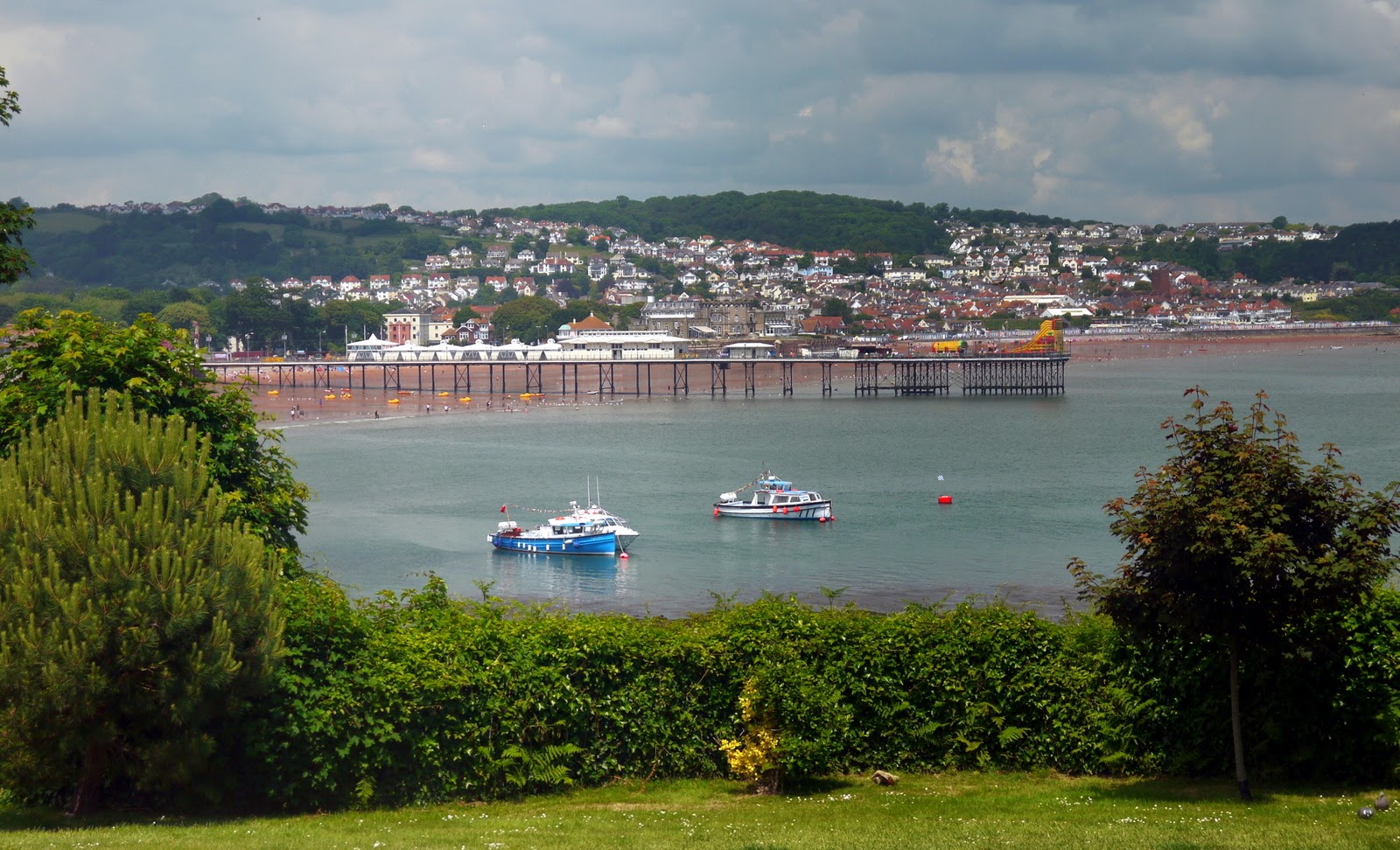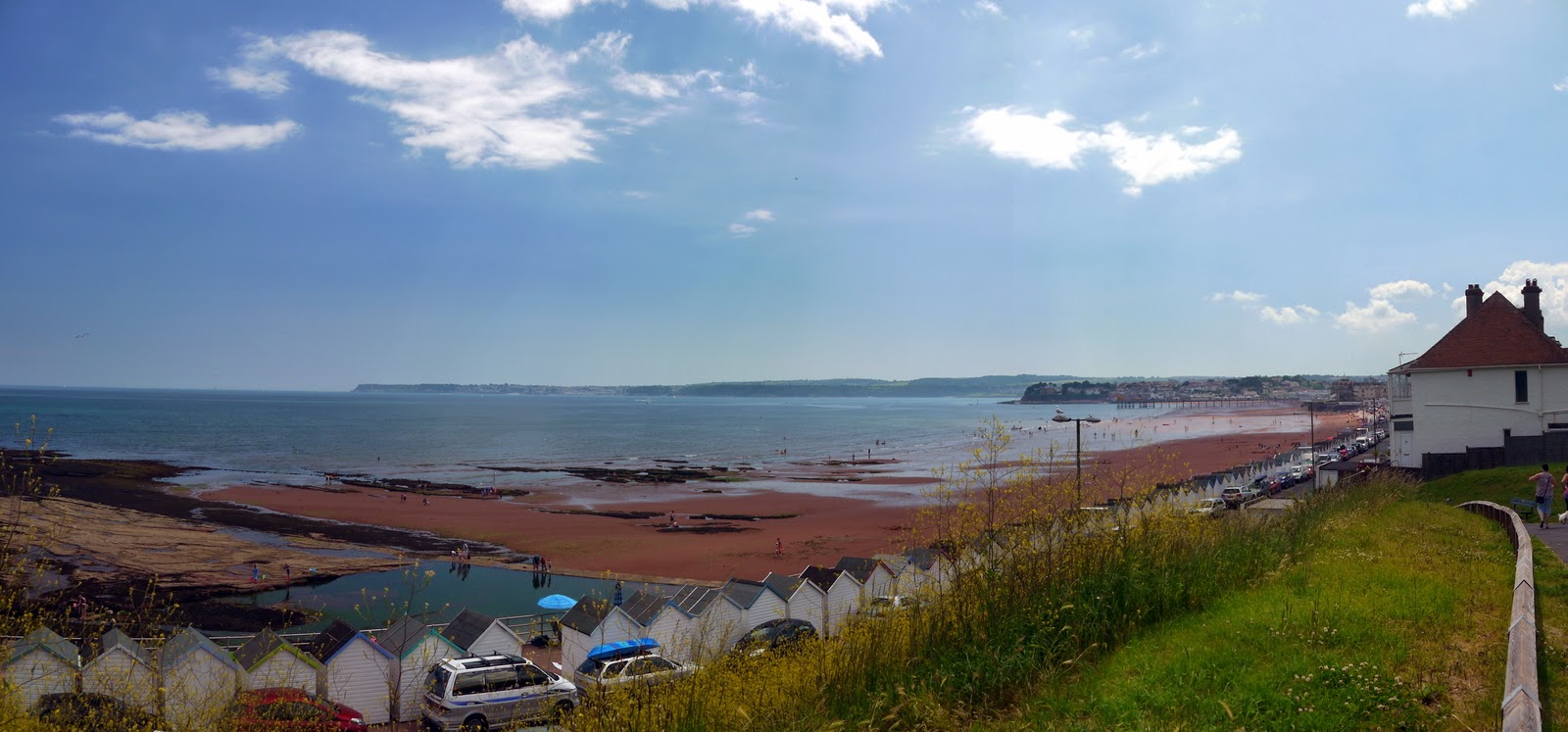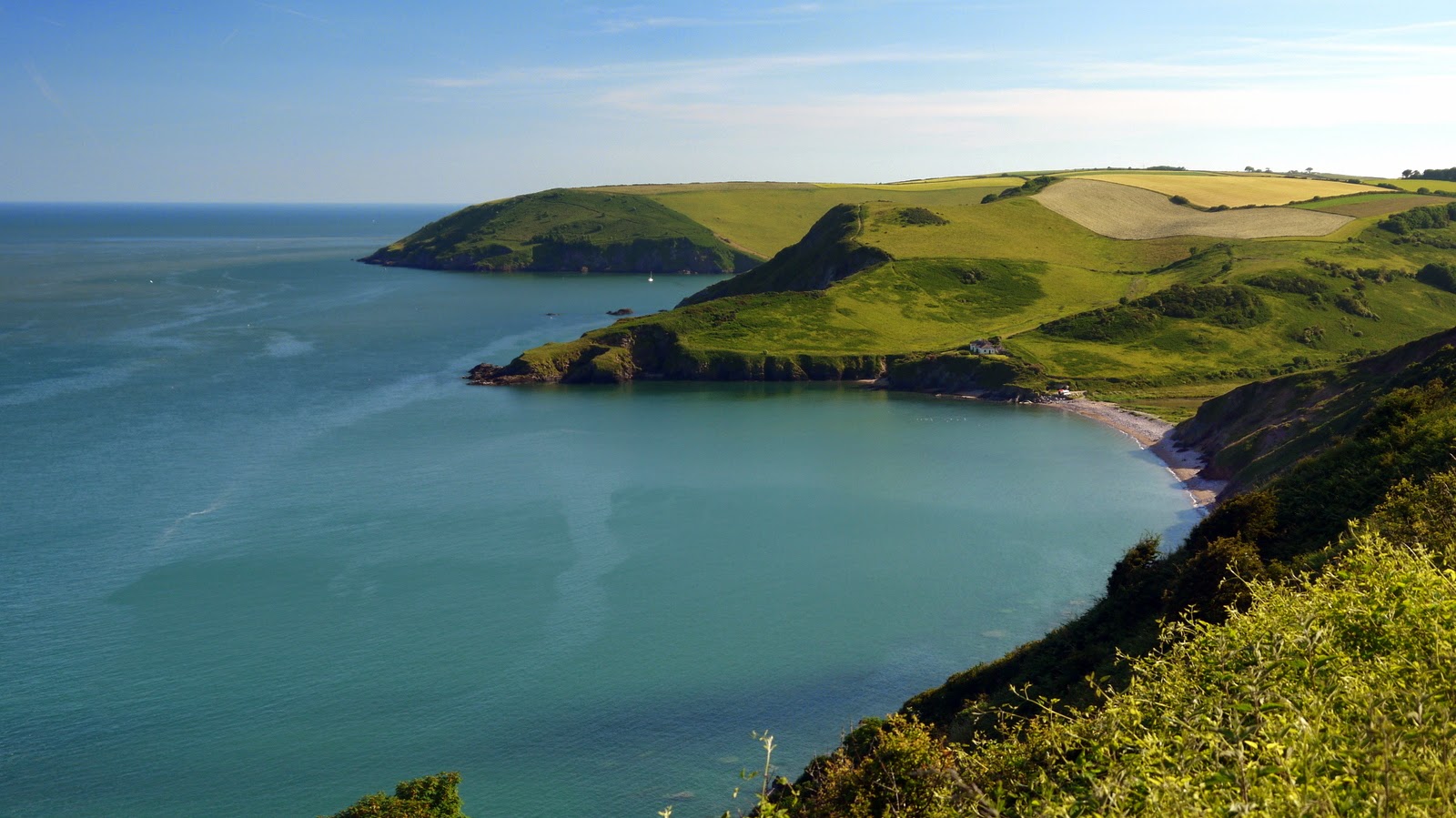 |
| Brixham Harbour |
After a lengthy and hot day on my
first day in the south west I was rather pleased that I had planned to be less
ambitious on my second day. It enabled me to have a slightly later start
as I only had a fairly modest eight mile section to Torquay to complete.
One of the reasons why I had planned such a short section was partly to do with
the vagaries of public transport but also to enable enough time for me to visit
the Dartmouth Steam Railway.
 |
| Brixham Coast |
Getting the bus over to Brixham
for the start of the walk was pretty easy although I would have preferred to go
by train. Sadly for me the last train ran to Brixham more than 50 years
ago so I was a little late for that! I did however enjoy my ride at the
front of the top deck of the bus – that is always a treat! I got to
Brixham in mid morning and provisioned myself up before heading north along the
coast.
 |
| Brixham Wall Art |
It was a slightly different day
today with more cloud around, more breeze and yet a more intense sun. Before
leaving Brixham I decided to hang around the harbour for a short while to watch
the morning’s activities. Some of the please boats were gearing up to go
including the ferry that heads all the way into Torquay. I cursed myself
as that probably would have been a more memorable way to do the return journey
than the bus. After watching the departure of some rather empty looking
pleasure cruisers I headed on my way towards Goodrington.
 |
| Brixham Battery |
To the north of Brixham Harbour
were a good number of former World War II defences and I imagine that back in
those days the structures left behind would have stationed some pretty powerful
guns to ward off enemy ships. Now all was peaceful and it made for a very
attractive park full of families rather than watchful soldiers. The path
climbed up to a higher level away from the path and passed alongside a golf
course through some woods briefly. I came out to an area by a small
museum dedicated to World War II and a new development site that looked as if
some old houses were being bulldozed for a holiday park. Lucky
holidaymakers – the view from here looked lovely. The signage was a
little confusing here but I soon figured out that I was actually supposed to
drop down to sea level and happened upon the most glorious cove complete with
sandy beach. I was surprised at how few people were using the beach given the
proximity to the local population centres of Churston and Brixham. A
couple of people had pitched their tent at the back of the beach and looked to
have found an idyllic spot to camp.
 |
| Churston Cove |
I started climbing up the rocky
side of the cove on the other side of the beach and waited my turn half way up
for a couple of people to come down. I almost wished I hadn’t made this
gesture as what I thought were a couple of people turned out to be a steady
stream and I stood there like a lemon for some time before finally plunging
into more woods on the other side along a surprisingly straight section of
path. This was a quiet section and was probably the only time in the
whole day that I had the path completely to myself. It was something of a
relief to be walking through the woods as although I didn’t get much of a view
I did at least enjoy some cooler temperatures in the shade.
 |
| Churston Point |
The next beach was rather larger
and as before I wound my way back down to sea level in order to cross the back
of it. This time there a lot more people enjoying the beach as I suppose
it was a lot more accessible. As I crossed I could see a young Council
worker who had possibly the most enviable cleansing job of all as he pottered
along litter picking the beach wearing his council issue shorts, t-shirt and
baseball cap.
 |
| Broadsands Clouds |
The character of my walk changed
from this point too – gone were the woods and the next stretch of path between
coves was through a clover filled meadow with views of Goodrington ahead of
me. This was pleasant strolling territory and the rugged coastline of
yesterday (and the next day if my memory serves me correctly) seemed a distant
memory. There were lots of families out enjoying the sunshine, although
ahead I could see some fairly menacing clouds beginning to develop. As I
rounded the headland the beach called Broadsands came into view and this was
perhaps one of the most scenic beaches I have ever seen. I paused on a
bench to enjoy the view and take on some water and as I did so I was lucky
enough to see one of the steam trains from the Dartmouth Railway puff past on
its way to Paignton.
 |
| Lively Getaway |
Feeling fortified I headed along
the crescent shaped beach front enjoying the people at play as I passed by and
admiring the cheerful looking beach huts. As I passed I realised how
different the path looks in high summer, for this is the first time I have done
any of the path during the main summer season. I have to confess that I
really enjoyed it and vowed that I would do some more of the path in the summer.
 |
| Goodrington Sands |
I walked almost the length of the
beach before climbing up and away from the cove along a path at the back of the
beach. I ended up crossing underneath the railway as it soared overhead
on a huge stone viaduct. On the other side I then climbed to the top of a
long flight of steps that took me above the level of the railway line. It
was pretty hot work and I had to make another drinks stop at the top. It
was at this point that I was passed by a female hiker who probably wondered
what she encountered when she saw my red sweaty self.
 |
| Roundham Head |
For awhile now the path followed
alongside the railway. Realising that a train had not long before passed
me I was anxious to try and ensure I had a close encounter. Evetually I
reached a good vantage point and when I heard the whistle of the train as it
left Paignton I stayed put for a short period of time so that I could watch its
approach. It soon came into view and slowed and stopped at Goodrington Sands
station. It was when it pulled away from the station that I got the best
show though. The line climbs slightly out of the station and the engine
really blasted its way up the slope belching out huge plumes of smoke as it did
so. It was a quite magnificent sight as it worked its way up the hill and
I was glad that I had paused to watch it.
 |
| Paignton Pier |
At Goodrington Sands I met the
proper holiday crowds as the beach was packed with people all making the most
of the good weather. I felt quite out of place with my hiking gear on
walking along the promenade. I imagine that the beach gets only busier
during the school holidays and with good reason – it is one of the nicest I
have seen for quite a while and with plenty of facilities on hand for young
families. There was a big water park and restaurants/ pubs all catering
for the holiday traffic and perhaps Weymouth aside this was the first time that
I had really seen facilities on this scale along the SWCP. Yet, in its
way it was every bit as enjoyable as the lighthouses and rugged sections of
coast.
 |
| Paignton Harbour |
At the far end of Goodrington
Sands I climbed up the cliff and into Roundham Gardens. This section
reminded me rather of Bournemouth in the way it was laid out. At the top
of the cliff I was surprised to see that some of the facilities, including the
pitch and putt course were closed and I am guessing that these would not be
open for the season. It was also obvious that the beautiful weather I had
had up to now would not likely last for the remaining part of the day. At
the far side of Roundham Head I entered Paignton. At first this didn’t
seem like a big deal as the path took me through some residential streets but
then I came upon the harbour, which was a little gem.
 |
| Candy Coloured Hotels in Paignton |
I passed by the harbour and saw a
house that the emergency services were trying to break into. I am not sure what
the back story was here but I do hope the occupant was alright. Just
beyond that and the sweep of the beach at Paignton was quite superb.
There was a funny little pier about half way along the beach – not as grand as
others that I am used to but it was good to see one anyway. It rather reminded
me of the one further along the coast at Teignmouth. When I reached it I
took the opportunity to have an ice cream and paused to try and gauge what was going
on at Paignton Green, the park just behind the beach. Evidently there was a
large open air concert planned for later in the day and the stars of the show
would be UB40. Things were obviously some way from being completed but I
imagine that anyone who wasn’t lucky enough to be a ticket holder could still
hang out on the beach and enjoy the music.
 |
| Paignton Beach |
At the far end of the beach I had
to briefly walk along the road to get around a folly like hotel before
regaining the promenade. The beach had become less intensely busy by this
time and surprisingly few of the long line of beach huts were actually in
use. Perhaps the thing that caught my eye most of all along this stretch
though was the tidal pool at the far end of the beach, which I took to be some
kind of paddling pool.
 |
| Looking Back to Paignton |
In truth most of the remaining
part of the walk into Torquay was most disappointing. Apart from crossing
a rather forlorn and neglected park most of the remaining walk was along the
very busy seafront road connecting Paignton and Torquay. The clouds that
had threatened to cover the sky did so too, so even the views out towards
Torquay Harbour were rather more ordinary than they could have been. I
crossed the road just before Torquay station to take advantage of the one
viewpoint there was but in truth I was disappointed with the lighting for my
picture. Shortly after I caught the bus back to Paignton and from there
had my ride on the steam train, which was fabulous!
 |
| Arrival at Torquay |
Originally I had intended to walk
these two days as a single day but in truth I am glad I split them as the first
day was rather harder than I thought and I don’t think I would have got
anything like the enjoyment from this section as I did. True, it isn’t
very challenging but it is far from being the easiest section I have completed
for the weather was hot and there were a few steep if modest climbs.
Overall I was very pleased with my couple of days away and hope that I can
sneak another of these short trips again before the end of the year.





































